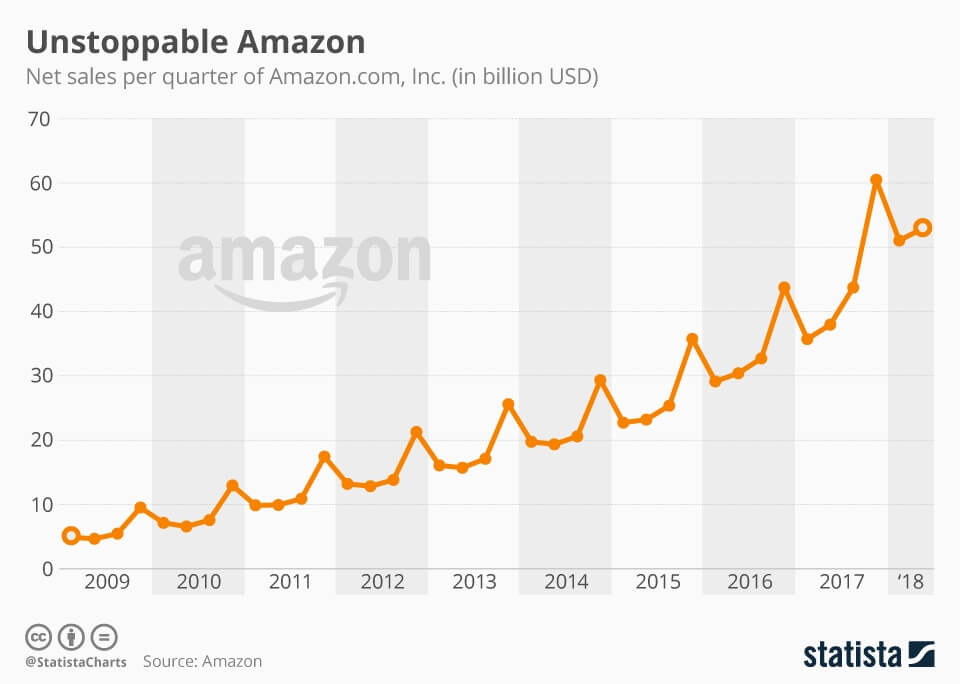ProAV: Business Agility as a Competitive Advantage
Change isn’t new to the ProAV industry, but the rate of change may be the downfall for even the largest firms. After all, the innovations, inventions and the integration with AV over IT have made for a robust industry with $186 billion in revenue for 2018 and projections calling for $229 billion by 2023 (source: AV Industry Outlook). It’s that in 2019, the rate of change is going to put more than a few manufacturers and systems integrators out of business before 2023 arrives. But, there’s hope for ProAV: business agility as a competitive advantage.
Any entrenched industry is going to face change. Retail faced it when Amazon competed with brick-and-mortar and grew to the point where they changed the experience for B2C customers forever. Kodak actually developed the world’s first consumer digital camera. Ironically, the innovation could not get approval to launch or sell because of fear of the effects on the film market. Before Netflix decimated Blockbuster, Reed Hastings, the CEO of Netflix, proposed that Blockbuster advertise Netflix in-stores so that a partnership could be formed for online and brick-and-mortar. Blockbuster’s CEO, John Antioco, refused the offer because he thought Netflix was only a “niche business.”
Changes like these happened relatively quickly, in a matter of just a few years at the beginning of the age of broadband internet. The rate of change has only increased and the adoption of new technologies and services now happens in months and weeks, not years and decades. It is the rate of change which will be the “sudden” downfall of even some well-known brands in the ProAV industry. This prediction is not without historical evidence, much less the current trend reported here on rAVe about the huge number of acquisitions and mergers that continue to reshape the audio-video industry through consolidation. What used to work isn’t and larger companies are gobbling up smaller ones who have seen shrinking margins and need better management, deeper pockets and an appetite for innovation.
Change Is Inevitable, Growth Is Optional
Even with such stunning success at Amazon, Jeff Bezos has said, “Amazon is not too big to fail. If you look at large companies, their lifespans tend to be 30-plus years, not 100-plus years.” If the world’s wealthiest person doesn’t think his empire is too big to fail, how much more should the titans of the ProAV industry be looking not at 100-year lifespans or even 30-years of market dominance, but mere relevance within the next five years? The future of rapid pace of change brings with it the real possibility that some ProAV brands may not be relevant in the 2023 outlook from AVIXA.
If the worlds’ wealthiest person doesn’t think his empire is too big to fail, how much more should the titans of the pro AV industry be looking not at 100-year lifespans or even 30-years of market dominance, but mere relevance within the next five years.
In the 1990s, IBM’s dominance as a technology leader began to seriously wane with its failure to pivot with widespread PC adoption. While ‘Big Blue’ does still make hardware, its primary focus shifted to software solutions. Today, IBM is again a major force with enterprise-class businesses and has additional growth happening in commercial business accounts for hybrid cloud, database, and storage offerings. This kind of turnaround is an example for the ProAV industry to follow, with a heavy emphasis on new management focusing on business agility.
Agile and Lean
Business agility. It sounds nice, doesn’t it? Any competitive business advantage, however, comes with a cost. In this case, agility requires not just new practices or strategies, but entirely new kinds of thinking.
Consider Amazon. The company began by thinking differently about selling books because they were the most practical product choice since Amazon could offer a much wider selection of inventory than any brick-and-mortar store. With a just-enough, just-in-time product ordering and shipping model, Bezos company thought differently about how to deliver value at scale. But his model wasn’t new; it was riffing off of what Toyota had done with the Toyota Production System for manufacturing, which is a philosophy to work intelligently and eliminate waste so that only minimal inventory is needed. The system is also known by the more generic lean manufacturing.
Then consider how software is developed and offered today. It wasn’t long ago that updating the Microsoft Office Suite meant huge purchase orders every few years for licensing and slow updates/rollouts across companies. Today, Office 365 is the online-based solution for ensuring up-to-date software for every person a company.

The impressive growth of Amazon is a direct result of thinking differently and leveraging business agility as a competitive advantage.
Taking it a step further, let’s go back to Amazon, but this time to its profit machine, Amazon Web Services (AWS). The very same infrastructure used to sell just about every product is now available to your company on a buy-what-you-need, as-you-need-it (another case of the just-in-time model) basis. Amazon’s production website, Amazon.com, is developed by hundreds of small teams working on specific aspects of functionality in short sprints of work. In 2015, Amazon was pushing a new software deployment every second of the day. Don’t miss that scale and velocity: a new software update pushed to production servers. Every. Single. Second. And that was back in 2015!
All of these examples have one thing in common: business agility. More specifically, they’ve switched from old thinking to thinking differently about the efficacy and scalability of their businesses. Since the 2000s, Agile has been nearly synonymous with the software development industry. What started out as a dozen or so people writing the Agile Manifesto to declare their intentions of thinking differently about software development was really just a new way of taking the thinking inherent in Toyota Production System (Lean) and applying it to how software could be created, tested, deployed, measured, validated and updated.
Business Agility as a Competitive Advantage
In 2009, I found myself at a Software-as-a-Service (SaaS) company leading marketing and communications. Walking into the software development area blew my mind: a 60-foot-long, magnetic whiteboard with cards showing work in progress across multiple teams. Because my team needed to know what was being worked on for upcoming releases so that we could prepare the content for promotion, I began meeting with the leaders of the software teams and learned about a particular flavor of Agile called Scrum. My boss thought it was impressive and led the effort for us to try applying Scrum to marketing and community management. The end result was a lot of learning, some key lessons, and ultimately a better way to work as a team to deliver value at speed with consistency. Over the next decade, I learned even more about Agile and came to understand that no matter the flavor for the framework (Scrum, Kanban, Scrumban, Lean, etc.) the principles were undeniably true and helpful for thinking differently and doing better quality work by consistently improving and continually delivering together.
Business agility is the scalable delivery of value at speed. Experiencing these kinds of next-level results focused far more on outcomes than on outputs and revealed to me the massive competitive advantage of business agility.
While the true stories above provide ample proof of the value of Agile for business, the opportunity for today’s ProAV industry newcomers and veterans alike is to introduce business agility through existing products and services. Often called pilot programs, the idea is to take create a squad out of a group of disparate team members who can come together with the necessary skills to bring a new solution to market. Instead of top-down, command-and-control management, give this one squad the time and resources they need, including an Agile transformation coach, to find new ways to eliminate wasted effort, flatten decision-making, quickly pivot, test and rapidly prototype and learn together. With some helpful practices and, most importantly, the buy-in of their leadership and the squad members themselves to work better as together than apart, these three to six-month pilot programs can go a long way to demonstrating the ability to think differently and deliver value sooner.
From that first company in 2009 to several since, I’ve invested heavily into learning how to bring this advantage to each firm I’ve worked for and with, even leading me to earn certifications and become an Agile transformation coach with an emphasis on marketing and sales agility. What matters is not ‘doing Agile’ but being Agile by taking a leader-first position on pivoting the organization to value, measure and even compensate teams for leveraging team-based business agility. I wouldn’t go back to business-as-usual for any paycheck amount because of the huge advantages (and fun) of being nimble, failing fast and learning together are unbeatable.
This is what’s needed in ProAV: business agility as a competitive advantage. Because, after all, change is inevitable; growth is optional.
Do you know of examples of ProAV firms embracing Agile? Comment below.






